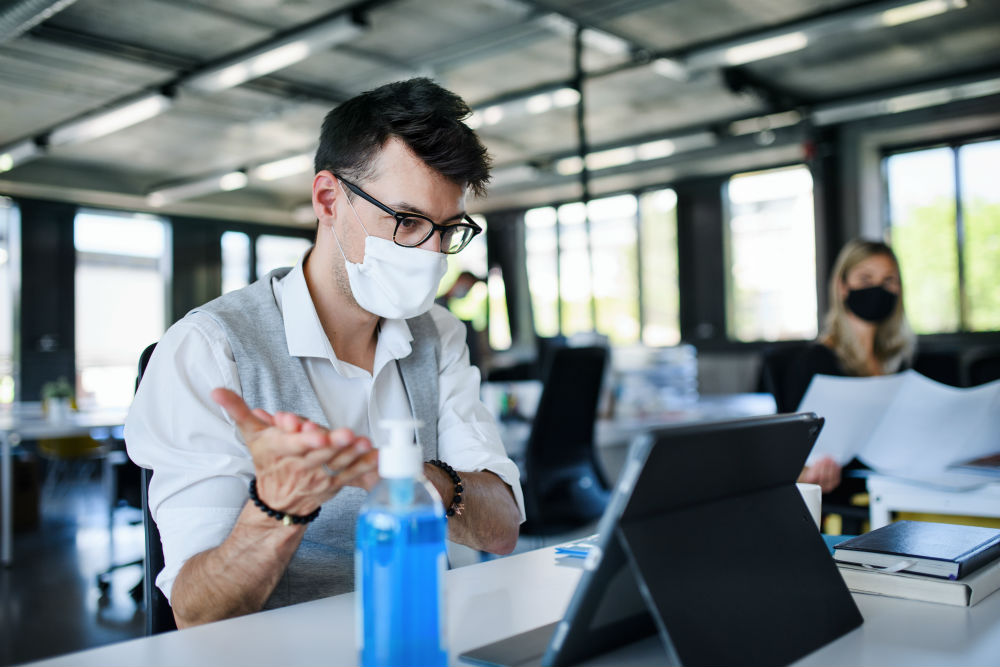
COVID-19: Adapting Workplaces and Protecting Workers
The COVID-19 pandemic has disrupted our lives in all sorts of ways. For business owners, it has led to staff shortages, lockdowns and inefficiencies. As they grapple with these new realities, more and more business owners are looking for ways to reduce the risk of needless downtime related to staff outbreaks. Here’s how you can adapt your workplace to reduce the risk of transmission and protect your employees, your customers and your bottom line.
Consider Temperature Pre-Screening.
To prevent COVID-19 outbreaks from getting a foothold in their facilities, more and more companies are pre-screening for elevated body temperatures (EBTs). An EBT above 100.4°F is usually an indication of a fever, one of the most common symptoms of COVID-19. While it’s not a foolproof way to identify an infection, pre-screening can help reduce risk.
Look into Device Disinfecting Lockers.
Products and equipment that are often exchanged between workers or used during different shifts are often difficult or impossible to clean with disinfectants. Portable device disinfecting lockers are able to disinfect mobile devices and other assets easily and efficiently, using UV-C light, the same method used in hospitals to kill viruses and bacteria.
Establish Engineering Controls.
As appropriate, it’s best to use physical barriers to separate workers from members of the general public. This is especially important in high-traffic areas such as at customer service windows and cash register lanes. Plexiglass partitions and temporary kiosks are a great way to shield employees who may be exposed to several customers during a single shift.
Companies can use rope-and-stanchion systems to keep customers from congregating near work areas. These can be used to create a waiting area for customers that’s separated by a minimum of 6 feet from workstations. Signage that instructs social distancing may bolster the effectiveness of this helpful engineering control.
If possible, companies should place impervious barriers between workers, especially if they can’t keep an acceptable distance from each other. Barriers can be purpose-made or, if necessary, improvised using items such as partitions, mobile drawers, plastic sheeting or storage units.
When barriers can’t be used, businesses should add additional space between workers; for instance, they can add at least two empty desks on either side of every staffer.
Come Up with a Plan.
There are a few eventualities you will need to plan for if you want to reduce the risk of an outbreak at your workplace. To help you create a preventative strategy and action plan, consider the following tips:
- Establish flexible work hours and/or staggered shifts.
- Create flexible worksites and encourage telecommuting if feasible.
- Stagger breaks and arrange seating in common areas to create physical distance between workers.
- Use curbside pickup or drive-through windows if possible.
- Limit the number of customer capacity allowed at one time.
- Encourage employees to bring any health and safety concerns to the employers’ attention.
- Encourage employees to stay home if they are not feeling well.
- Isolate any employees who begin to exhibit symptoms until they can go home or leave the workplace to seek medical care.
- Make sure sick employees get tested for COVID-19 before allowing them to return to work.
Regularly Disinfect the Workplace.
Routine cleaning is an essential strategy for reducing the risk of workplace outbreaks. Establish protocols and provide necessary supplies to disinfect common areas and frequently-touched surfaces in all workspaces and any public-facing areas, such as points of sale. Wipe down pens/styluses and credit card terminals between each customer. Provide disinfecting wipes for workers and customers to reduce the chance of worker exposure. Wipe down worker-facing keyboards, touch screens and other equipment whenever employees change workstations. Frequently clean handles and push bars on any doors that don’t open automatically.
You should also regularly clean bathrooms since these poorly ventilated areas are common areas of viral transmission.
In addition to keeping your staff safe, it’s important to make sure your systems are secure. Fisher Technology can help secure your company’s systems and streamline operational efficiencies. We manage servers, computers, network equipment, cloud environments, mobile devices and applications. We can protect your business from hackers and malware while streamlining your operations with innovative workflow solutions, including electronic document automation. Contact us to learn more.
